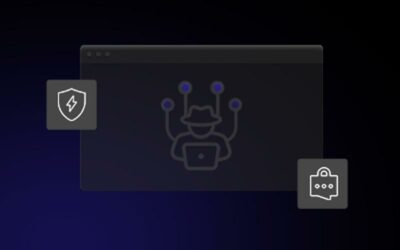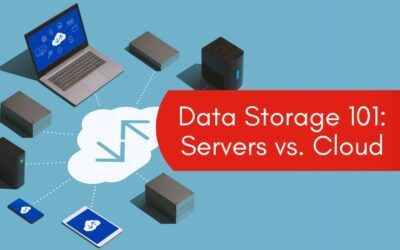Technology is evolving rapidly, and Big Data analytics is fast becoming one of the most viable ways for companies to gain the business insights required to start operating in a more consumer-aligned way.
WHAT EXACTLY IS BIG DATA?
Big data (BD) is a field that creates ways to analyze, systematically retrieve information from, or otherwise, work with complex or huge data sets to be dealt with by traditional data-processing application software.
Data scientists break big data into four dimensions:
Volume is the size of the data which determines its potential and value, and whether it can actually be considered as Big Data or not.
Variety means that the category to which the data belongs is also a very important fact that needs to be known by the data analysts. This helps the people who are closely analyzing the data and are associated with it, to properly implement the data to their advantage and thus uphold its importance.
On the other hand, velocity refers to how swift the data is generated and processed to be useful.
The variability of the data can also be a problem for the analysts. Veracity is the quality of the data being captured. The accurate analysis depends on the veracity of the source data.
BIG DATA AND ITS ROLE IN DIGITAL TRANSFORMATION
As websites, mobile devices, apps, social networks, image applications, banking transactions, etc. are flooding all channels of communication and information, a new concept is born: Big Data.
The current explosion in our digital world is transforming, as the size of Big Data (BD) is constantly changing and increasing rapidly. Big data helps predict future trends and has been helping organizations foresee the impact of training programs on an individual business unit and organizational success.
Many businesses already use big data to make decisions about sales, financial services, advertising, risk management, pricing, supply chain management – you name it.
BIG DATA AND ONLINE EDUCATION
According to the ATD 2019 State of the Industry Report, in 2018, U.S. organizations showed the average organization had a direct learning expenditure of $1,299 per employee in 2018 and each worker used 34 hours (slightly higher than four eight-hour workdays) on formal learning; 22 percent were delivered as online, self-paced eLearning programs.
The realm of online education is currently reshaping the educational and training landscape, and this is evident in MOOCs (massive open online courses).
Why are they making such a huge impact? The reasons are many and increasing.
Not only do they offer unprecedented access, scalability, and challenge the long-held notion that content is king, but they can give massive amounts of user data.
We’re not talking just how long people deal with a particular task or who got what question correct; we’re talking about the ability to analyze and track each aspect of the learner experience.
When the entire learning process takes place online, the entire learning process can be analyzed and tracked, and the data generated goes far beyond what is available in a classroom.
This knowledge can be used to improve both instructor-led training (ILT), and online education by admissions consultants.
On the other hand, most organizations could not amass enough data to inform decisions about their training programs. Now data is being gathered from millions of learners in online education and corporate classrooms all over the Internet.
As more colleges’ and universities’ quality admissions consulting and (in true MOOC spirit) share their data, we will start to create new models to increase instructional effectiveness and efficiency.
IS USING BIG DATA A SOLUTION?
Despite the crisis, it seems that digital companies and online education have their sights on technologies that can provide greater organizational efficiency and new business opportunities based on data.
This means that the processes with which data is handled have become major corporate challenges. This holds true with many schools participating in online education. No matter how huge data is, it is the vast resource that is readily available that proves ever useful to learners.
Document technology companies have been able to detect these new needs and have designed appropriate solutions that allow businesses to easily manage large volumes of data at the correct time and place, enabling these organizations to be much more competitive.
Computers can help determine how many applicants have a master’s degree or help admission consultants know how many have GPAs above 3.9, but they can’t tell whether a prospective employee is creative, has workable visions for the company, or will interact productively with their co-workers.
SECURITY PROBLEMS AND WHY THEY CAN BE AN ISSUE
Teachers, faculties, and even consultants are worried about the safekeeping of test papers, academic reports, mark sheets, project marks, etc. The leak of such documents prior to the final events was a common and plausible phenomenon owing to a few deceitful members within the institutions.
However, with ERP (Enterprise Resource Planning) integrated with Big Data leakage problems are solved outright because it empowers teachers to keep crucial student documents, test papers, and other records in an online database with password settings, thereby limiting their access only to some restricted members.
Inaccurate attendances, missing records, misplaced data, and leakages are some major issues in big educational institutions. But now, data-backed ERPs have solved it effortlessly.
Who knew schools, colleges, or universities could be so much safer and secure? With the leap of technology towards digital advancements, educational institutes made a brave move to make tasks easier for them and nurture students in the safest possible ways.
IS BIG DATA THE UNAVOIDABLE FUTURE?
Many mistakenly believe that the rise of Big Data will reduce the need for humans to work in human resources. If a computer can sort through job applications and select ideal employees on its own, why bother hiring anyone to assess potential employees?
When combined with proper human resource management, Big Data hiring practices make for happier, more loyal employees. Companies can expect improved labor relations, and workers can expect more enjoyable and fulfilling jobs, as Big Data continues to embed itself in the economy.
Big Data, however, does not merely need to be scanned and sorted; it has to be analyzed and interpreted, jobs that only humans can do.
Machines and computers can only provide and assemble data, numbers, and percentages, but they cannot detect the soft skills and creativity of a person.
It is for this reason that Big Data will only increase the number of human resource workers that companies will hire; one study estimates that an additional 1.5 million “data-savvy managers” will be hired as Big Data becomes thoroughly integrated into the American economy.



